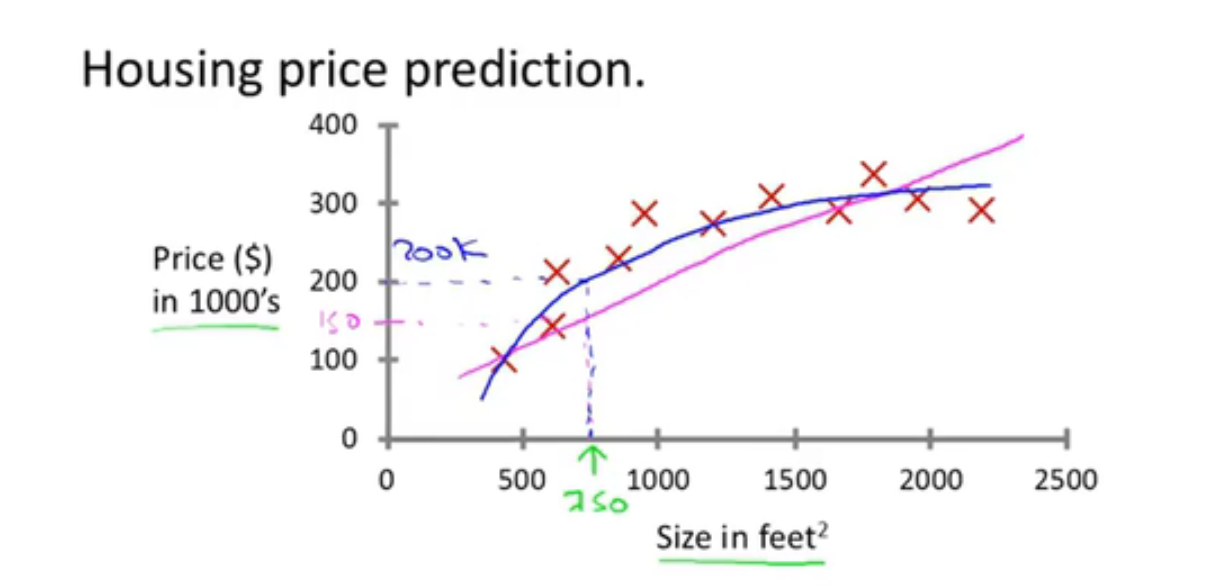1、What is Machine Learning?
Two definitions of Machine Learning are offered. Arthur Samuel described it as: “the field of study that gives computers the ability to learn without being explicitly programmed.” This is an older, informal definition.
Tom Mitchell provides a more modern definition: “A computer program is said to learn from experience E with respect to some class of tasks T and performance measure P, if its performance at tasks in T, as measured by P, improves with experience E.”
Example: playing checkers.
E = the experience of playing many games of checkers
T = the task of playing checkers.
P = the probability that the program will win the next game.
In general, any machine learning problem can be assigned to one of two broad classifications:
Supervised learning and Unsupervised learning.
机器学习的两种定义:1、在无需具体编程规则的条件下,给予计算机以学习的能力。2、计算机程序从经验E中学习某些类型的任务T和性能度量P,任务T中的性能(以P度量)随着经验E的提高而提高
2、supervised learning(监督学习)和unsupervised learning(无监督学习)
supervised learning(监督学习):
在监督学习中,我们得到了一个数据集,并且已经知道我们的正确输出应该是什么样子,并且知道输入和输出之间存在关系。
监督学习问题分为“回归”和“分类”问题。在回归问题中,我们试图预测连续输出中的结果,这意味着我们试图将输入变量映射到某个连续函数。在分类问题中,我们试图在离散输出中预测结果。换句话说,我们试图将输入变量映射到离散类别中。
例1:
给定有关房地产市场上房屋大小的数据,尝试预测它们的价格。价格作为规模的函数是一个连续的输出,所以这是一个回归问题。
我们可以把这个例子变成一个分类问题,而是输出关于房子“售价高于还是低于要价”的输出。在这里,我们根据价格将房屋分为两个独立的类别。
例2:
(a) 回归(regression)——给定一张人的照片,我们必须根据给定的照片预测他们的年龄
(b) 分类(classification)——给定一个患有肿瘤的患者,我们必须预测肿瘤是恶性的还是良性的。
unsupervised learning(无监督学习)
无监督学习使我们能够在几乎不知道结果应该是什么样子的情况下解决问题。我们可以从数据中推导出结构,而我们不一定知道变量的影响。我们可以通过基于数据中变量之间的关系对数据进行聚类来推导出这种结构。对于无监督学习,没有基于预测结果的反馈。 (无监督学习则是把相同的分为一类)(个人理解)。

